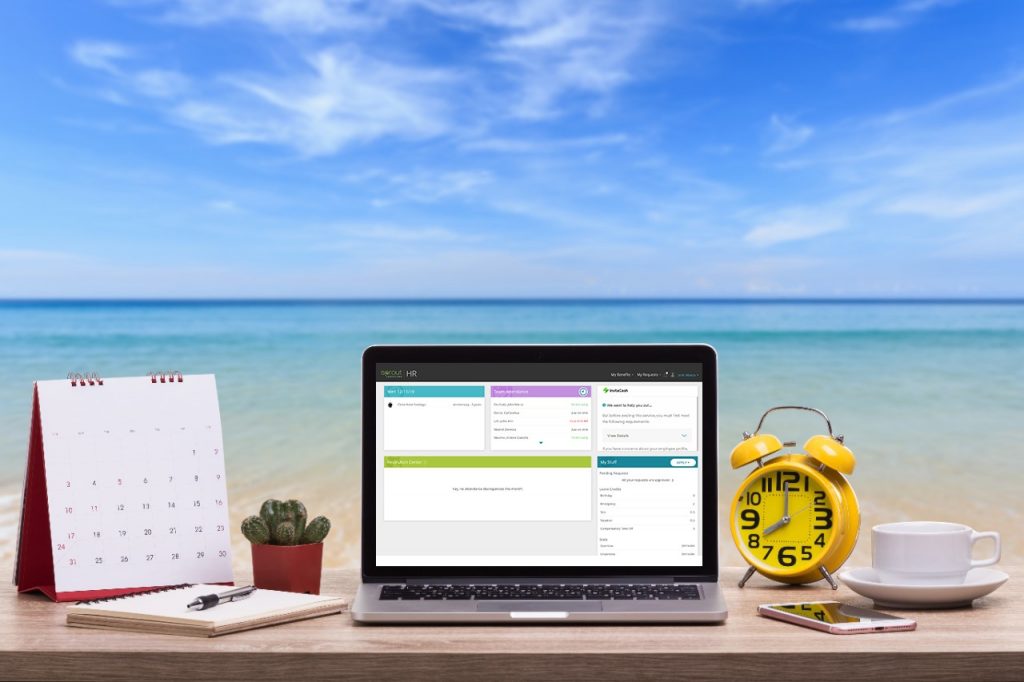With the easing of restrictions for domestic leisure travel, it’s time to enjoy the great outdoors without worries about your workplace.
Companies have already shifted to remote offices with work from home arrangements, and now that it’s possible to be more mobile, it’s time to rethink and retool practices to accommodate hybrid offices as part of the next normal. Meetings can be done far away from the confines of the city, and you can track employee attendance and productivity while performing other office functions on your dashboard in a setting that offers a gorgeous view of Mother Nature.

Sprout Solutions, a Filipino software company, has launched the country’s first people platform designed for the future of work. Sprout’s ecosystem includes solutions for HR functions such as timekeeping, payroll and benefits, employee engagement, mental wellness, financial benefits, performance management and continuous learning, and even recruitment. These have greatly helped local companies manage the shift towards digital offices during the pandemic, also strengthening the migration towards remote work and ‘workations’ in the next normal.
What is a hybrid workplace?
According to Sprout Solutions Chief People and Customer Officer Arlene De Castro, a hybrid workplace is a flexible business model that supports a distributed workforce of in-office and remote employees. It typically includes the on-site presence of a skeletal workforce, while the other members are free to come and go as they please as they work from home (WFH). “The hybrid model is built on the pillars of flexibility and support. It empowers employees by giving them the freedom to choose where and when they want to work, instead of sticking to a predetermined schedule in the office.”
She adds that decision-makers should keep in mind that a hybrid format isn’t simply a fancy way of describing workplace situations caused by the pandemic. “It’s evolved into more than just an emergency measure imposed by an external force: it’s a proactive plan driven by better employee productivity and business performance.”

She gives a roadmap on how to make a hybrid office work, along with solutions that will make for a seamless transition. “First, you will need communication tools to collaborate when employees aren’t at the office. For example, instant messaging and video conferencing tools like Zoom, Slack, Basecamp, Confluence, Troop Messenger, and Microsoft Teams can help bridge the gap. You’ll also need a single platform where your team can access the resources to do their job. A unified communications (UC) platform puts together different video conferencing, file sharing, instant messaging, and VoIP tools into a centralized platform.”
Project Management will aid in giving the team complete visibility into their tasks, no matter where they’re working. Getting a bird’s eye view of pending tasks and deliverables makes it easier to hit project goals. For seamless project management, De Castro advises considering tools like Asana, Trello, Wrike, and Odoo. A modern, cloud-based People Management software, such as Sprout, is equally important, she adds. “This can drive better employee engagement and foster a more inclusive company culture. Sprout offers a very holistic ecosystem of products designed for the future of work.”
#GreatEmployersUseSprout
De Castro advises a shift in mindset as well, and this can be accomplished by retooling the company culture to accommodate a hybrid culture. Among her suggestions for building a successful hybrid workplace are to eliminate workplace biases against the productivity of remote workers and setting up a digital HQ where everyone can collaborate regardless of location and access internal documents or tech support. “To enable your team to have a hybrid mindset and a hybrid culture, leaders in the organization need to ensure buy-in from all levels in the organization. It can be done by engaging them all throughout the process. This change management initiative should be coupled with a sense of connectedness, as employees need to feel they are part of an overarching purpose in the organization. It also heavily involves forming and communicating clearly defined goals and having regular feedback cadence to improve trust and bolster accountability.”
She also talks about the importance of leaders being a role model of their company’s core value and digital work ethic to embody the productivity that they are encouraging from their team. On shifting and building a hybrid model made to last, she says, “creating a sustainable hybrid workplace lies in creating a framework that reflects how you define your organization’s success. Identifying opportunities offer the chance for you to assess, experiment, and learn. Adaptation is the key to survival in the new normal, and the road that lies ahead calls for constant adjustments and discovery of what will work best in the long run.”
Explore your future-forward workplace with the remote capabilities offered by Sprout Solutions. To find out how to start bringing the office to the coasts of Boracay and Palawan or the cool climates of Baguio and Tagaytay, visit the Sprout Solutions site at www.sprout.ph
